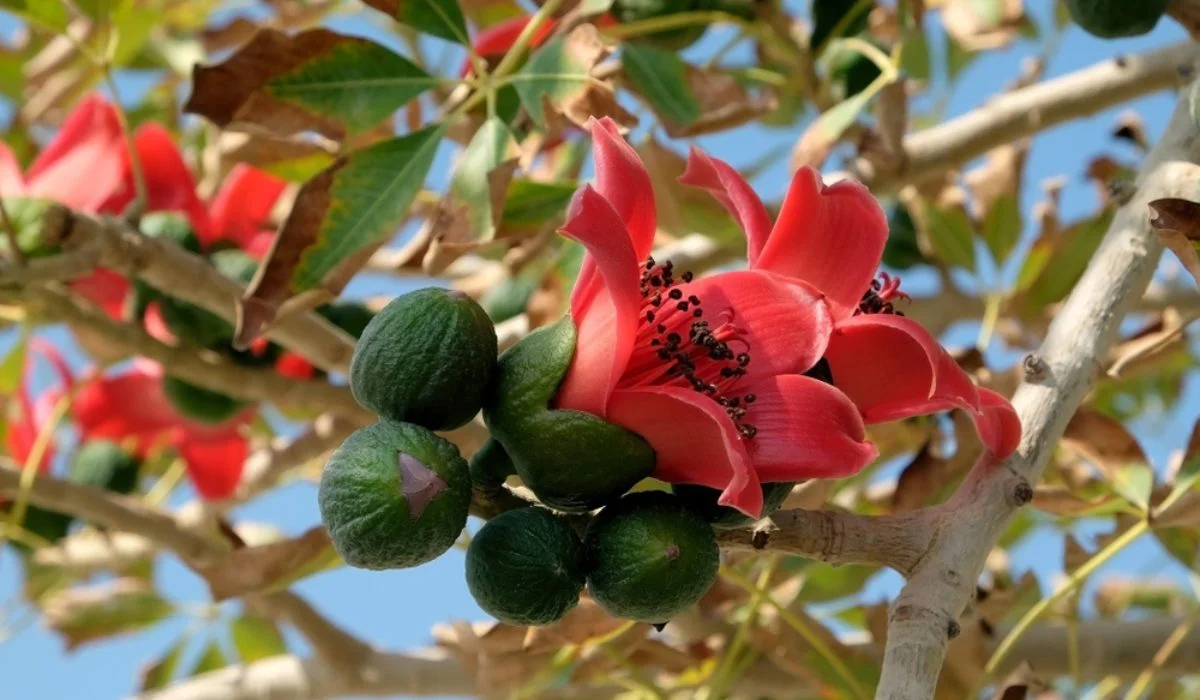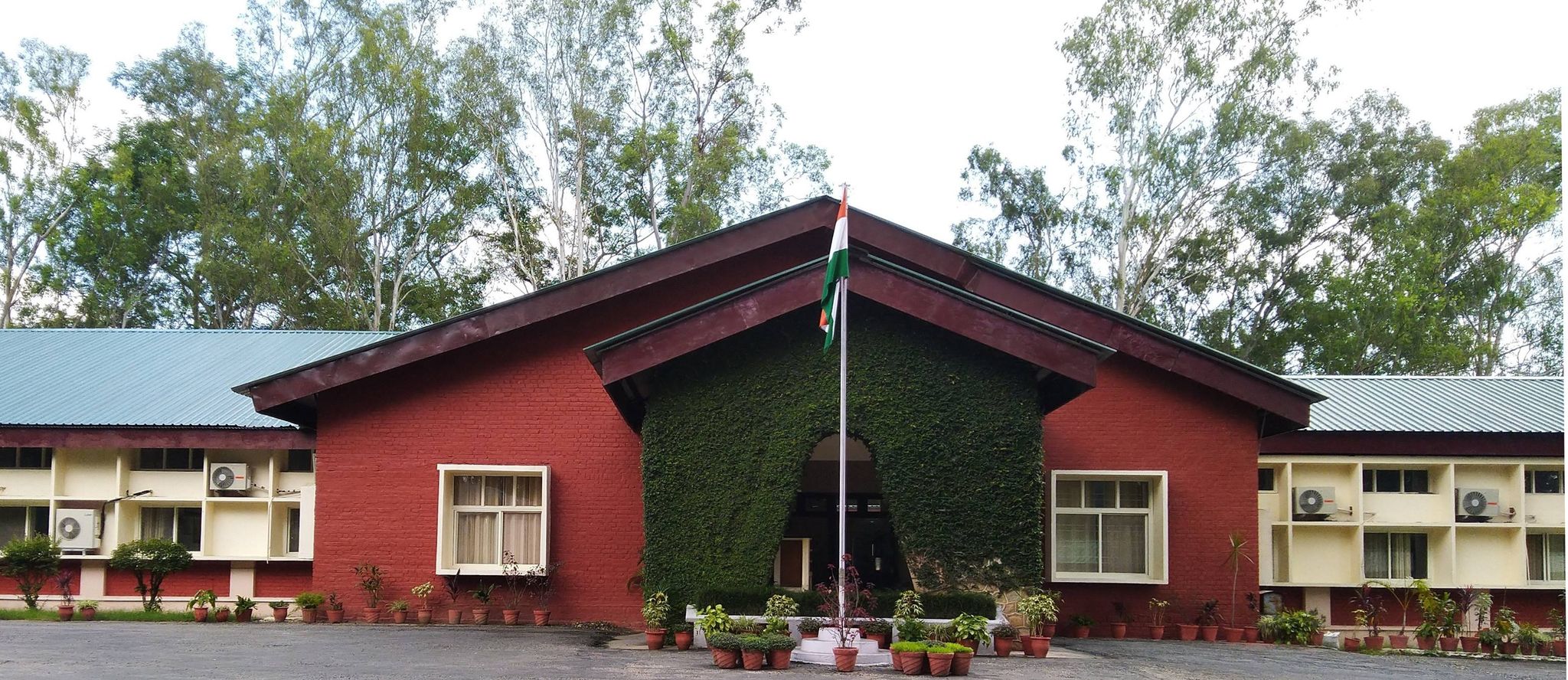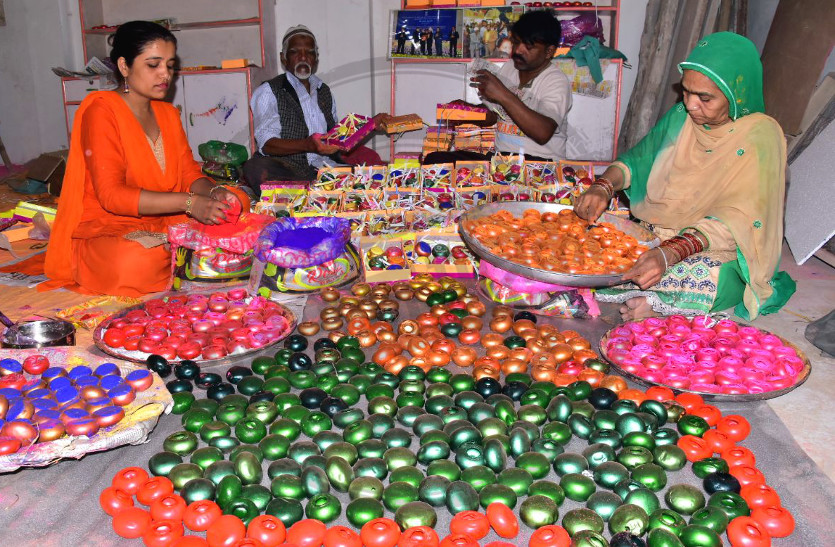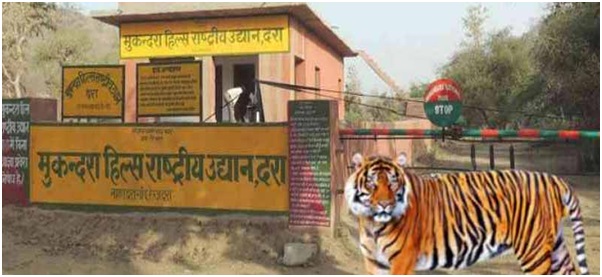Silk Cotton Tree

- 14 May 2024
Why is it in the News?
Silk cotton trees are dwindling in south Rajasthan, triggering a chain of detrimental effects on both the forests and the local populace in the region.
About Silk Cotton Tree:
- The silk cotton tree, or the semal tree is a type of native cotton tree with large red flowers.
- The genus name Salmalia is derived from the Sanskrit name Shaalmali.
- Silk cotton trees comprise eight species in the genus Bombax, native to India, tropical southern Asia, northern Australia and tropical Africa.
- These trees bear beautiful red-coloured flowers from January to March and the fruit on maturity appears during March and April.
- These are full of cotton-like fibrous stuff.
- It is for the fibre that villagers gather the semul fruit and extract the cotton substance called "kopak".
- This substance was once used for stuffing pillows, sofas and mattresses.
- The fruit is cooked and eaten and also pickled.
- Semul is quite a fast-growing tree and can attain a girth of 2 to 3 m, and a height of about 30 m, in nearly 50 years or so.
- It thrives in moist deciduous and semi-evergreen forests, as well as in plains, with occasional sightings in coastal areas and up to 1400 m in hilly regions.
- The tree is not particularly frost-tolerant and may get damaged by prolonged exposure to cold temperatures.
- Among the Garasia tribe in Rajasthan, the tree holds cultural significance, with some believing their lineage traces back to semal trees.
Distribution:
- Its distribution spans across various regions in India, including Andaman & Nicobar Island, Assam, Bihar, Kerala, Madhya Pradesh, Maharashtra, Odisha, Punjab, Rajasthan, and Uttar Pradesh.
Importance of the Tree:
- The tree's importance lies in its resistance to fire and its renowned cooling properties, making it valuable for land reclamation efforts.
- It generates abundant biomass each season and aids in carbon sequestration by shedding leaves before flowering.
- The late flowering of the small tree is considered by some researchers as a potential indicator of a hot summer or delayed monsoon.
- The silk cotton tree is known for its medicinal properties.
- The tree’s bark, leaves, and seeds are utilised in traditional medicine to cure various ailments, including fever, diarrhoea and skin conditions.
- The tree is also used as a natural remedy for wounds and cuts.
- The tree also serves as a habitat for rock bees, as its spikes deter sloth bears, and its reddish roots are consumed by tribal communities during the monsoon.
- Furthermore, it offers opportunities for agroforestry and provides essential resources like food, fodder, and fuelwood, with its wood being used by various tribes for crafting musical instruments and utensils.
Air Independent Propulsion (AIP) Technology

- 06 May 2024
Why is it in the News?
The Indian Navy has initiated trials to modernize its conventional submarine fleet by issuing a Rs 60,000 crore tender for the acquisition of highly advanced submarines equipped with Air Independent Propulsion (AIP) technology.
What is an Air Independent Propulsion (AIP)?
- Air Independent Propulsion (AIP) is a propulsion system used in submarines that allows them to operate underwater for extended periods without the need to surface or snorkel for air.
- Unlike traditional diesel-electric submarines, which rely on diesel engines for surface propulsion and battery-powered electric motors for submerged propulsion, AIP-equipped submarines use a supplementary propulsion system that generates power independently of atmospheric oxygen.
- AIP systems typically employ technologies such as fuel cells, closed-cycle diesel engines, Stirling engines, or other innovative methods to generate electricity or mechanical power for propulsion while submerged.
- Closed Cycle Diesel Engines: These engines use stored liquid oxygen and an inert gas, such as argon, to run the diesel engine while submerged.
- Closed Cycle Steam Turbines: These systems generate steam using stored liquid oxygen and a fuel source, such as diesel or bioethanol, to power a turbine and produce electricity.
- Stirling Cycle Engines: This technology utilizes a closed-cycle heat engine to generate power using a temperature difference between a hot and cold source.
- Fuel Cells: These devices convert chemical energy from a fuel, such as hydrogen, and an oxidizing agent, like stored liquid oxygen, into electrical energy through an electrochemical reaction.
- These systems produce minimal noise and exhaust, allowing submarines to operate quietly and stealthily underwater, making them less vulnerable to detection by sonar and other detection systems.
- The implementation of AIP technology significantly enhances the stealth and endurance capabilities of submarines, enabling them to conduct longer-duration covert missions and remain submerged for extended periods, thereby enhancing their overall operational effectiveness.
- The Defence Research and Development Organisation (DRDO) is pioneering fuel cell-based AIP systems, unique for their hydrogen generation capabilities.
- Developed by the Naval Materials Research Laboratory (NMRL) of DRDO, these systems offer flexibility in operation modes to meet diverse user requirements.
Survey of India (SoI)

- 23 Apr 2024
Why is it in the News?
The Tamil Nadu government filed its objections in the Supreme Court recently, about the Survey of India (SOI) report on the construction of the mega car parking project near the Mullaiperiyar dam, and sought rejection of the report.
What is the Survey of India (SoI)?
- The Survey of India (SoI) serves as the National Survey and Mapping Organization of India, operating under the Department of Science and Technology.
- Established in 1767, it holds the distinction of being the oldest scientific department within the Government of India.
- Tasked with the critical role of being the country's primary mapping agency, SoI bears the responsibility of thoroughly exploring and mapping India's terrain to furnish foundational maps for comprehensive and efficient development initiatives.
- Originally comprising only five directorates in 1950, primarily focused on catering to the mapping requirements of the Defense Forces in the Northwest and Northeast regions, the department has since expanded to encompass 18 directorates spread across the nation, ensuring comprehensive map coverage essential for national development.
- SoI's expertise is widely utilized by various ministries and government undertakings for diverse purposes, including delineating international borders, and state boundaries, and facilitating the planned development of previously underserved areas.
- Moreover, SoI actively contributes to numerous national scientific endeavors in fields such as geophysics, remote sensing, and digital data transmission.
- Functioning as a key advisor to the Government of India on all survey-related matters, including geodesy, photogrammetry, mapping, and map reproduction, SoI fulfills a multitude of duties and responsibilities, which include:
- Conducting all geodetic control, geodetic, and geophysical surveys.
- Undertaking topographical control, surveys, and mapping within India.
- Producing geographical maps and aeronautical charts.
- Conducting surveys for developmental projects.
- Mapping forests, cantonments, large-scale city surveys, guide maps, cadastral surveys, etc.
- Engaging in surveys and mapping for specialized purposes.
- Demarcating India's external boundaries, depicting them on published maps, and advising on inter-state boundary demarcation.
- Conducting research and development in cartography, printing, geodesy, photogrammetry, topographical surveys, and indigenization.
- Predicting tides at 44 ports, including 14 foreign ports, and publishing tide tables one year in advance to support navigational activities.
- Reviewing and certifying India's external boundaries and coastline on maps published by other entities, including private publishers.
- Headquartered: Dehradun (Uttarakhand)
Jaipur’s traditional celebrations with ‘Gulaal Gota’

- 23 Mar 2024
Why is it in the News?
In Jaipur, Rajasthan, a centuries-old tradition called "Gulaal Gota" will be observed during Holi, involving the throwing of colors through a unique medium, dating back around 400 years.
What is a Gulaal Gota?
- A Gulaal Gota is a small ball made of lac, filled with dry gulaal.
- Weighing around 20 grams when filled with gulaal, these balls are thrown at people on Holi, getting smashed to bits on impact.
- Local artisans say that making Gulaal Gotas involves first boiling the lac in water to make it flexible.
- Lac is a resinous substance that is secreted by certain insects. It is also used to make bangles.
- After shaping the lac, colour is added to it. At first red, yellow, and green are added as other colours can be obtained through their combinations.
- After the processing is done, artisans heat the lac.
- It is then blown into a spherical shape with the help of a blower called “phunkni”.
- Then, gulaal is filled in the balls before they are sealed with lac.
Where does the raw material for Gulaal Gota come from?
- Lac is brought from Chhattisgarh and Jharkhand.
- The female scale insect is one of the sources of lac.
- To produce 1 kg of lac resin, around 300,000 insects are killed.
- The lac insects also yield resin, lac dye, and lac wax.
How did Gulaal Gotas become a tradition in Jaipur?
- Gulaal Gotas are made by Muslim lac makers, called Manihaars, only in Jaipur.
- Manihaars’ ancestors were shepherds and horse traders who arrived from Afghanistan.
- They settled in Bagru, a town located close to Jaipur, and learned lac-making from Hindu lac makers or Lakhere.
- The city of Jaipur was established in 1727. Its founder Sawai Jai Singh II, an admirer of art, dedicated a lane at the Tripoliya Bazaar to the Manihaar community.
- This is where lac bangles, jewelry, and Gulaal Gota are mostly sold, to date.
What is the economics of this tradition?
- One box of six Gulaal Gota balls is sold for Rs 150, which is much costlier than water balloons.
- Usually, the whole family of artisans is engaged in this work, including women.
- For Manihaars, lac bangles are the main source of sustenance as making Gulaal Gota is a seasonal work.
- Artisans say that the bangles are eco-friendly as they are made without any chemicals.
Why the demand is falling?
- Jaipur has of late become a hub of many factories where cheap, chemical-based bangles are made with minimum lac.
- Original lac bangles are costlier than the manufactured ones. Hence, the demand for lac-only bangles has fallen.
- Many of the community’s younger members are also more interested in taking up blue-collar jobs instead of artisan work.
Government Support and Artisan Empowerment:
- The Indian government has issued artisan cards to Lac Bangle and Gulaal Gota craftsmen, enabling them to access benefits under various government schemes.
- Many artisans have ventured abroad to exhibit their craft, such as Awaz Mohammad, who was invited to showcase his work at the G20 summit in New Delhi last year.
- In efforts to preserve tradition, some Gulaal Gota artisans are advocating for a Geographical Indication (GI) tag, which can enhance product visibility and underscore its unique regional identity.
Haiper, the text-to-video model created by Google DeepMind and Tiktok alumni

- 07 Mar 2024
Why is it in the News?
Recently, a company founded by former members of Google DeepMind, TikTok, and top labs from research academia — introduced an eponymous new text-to-video model Haiper.
What is Haiper?
- Haiper is an all-in-one visual foundation model that allows everyone, with or without technical training, to generate high-quality video content with ease.
- The founders claim that Haiper brings forward cutting-edge machine learning with the belief that creativity should be “fun, surprising, and shareable”.
- The company has built Haiper as a powerful, industry-agnostic creativity tool.
- It was released by Google DeepMind and Tiktok alumni.
What does Haiper do?
- Haiper offers tools such as text-to-video, animated static images, video repainting tools, etc.
- Users can go on to the website, log in with their email addresses, and start generating videos for free by typing in text prompts.
- At present, users can only generate HD video spanning 2 seconds, and a slightly lower-quality video could go up to four seconds.
Strengths and limitations:
- While the short length is a limitation, the company is working towards extending the video outputs.
- Presently, the tool is free to use, with an aim to build a community.
- While OpenAI’s Sora is still not available for the public, Haiper is offering users to try its tool for free on its website.
Mukundra Hills Tiger Reserve in Rajasthan Now Opens for Safari Tours (TOI)

- 10 Oct 2023
Why in the News?
The forest department started the inaugural jungle safari at the Mukundra Hills Tiger Reserve on Monday, which marks the beginning of organised tiger reserve tours for tourists in four locations across the state.
About Mukundra Hills Tiger Reserve:
- Location: Mukundra Hills Tiger Reserve, also known as Darrah Wildlife Sanctuary, spans across four districts – Bundi, Kota, Jhalawar, and Chittorgarh in Rajasthan.
- The reserve is nestled in a valley formed by two parallel mountains, Mukundra and Gargola.
- Establishment: In 2013, the tiger reserve was formed, encompassing Mukandra National Park, Dara Sanctuary, Jawahar Sagar Sanctuary, and a section of Chambal Sanctuary.
- Initially, it served as a hunting preserve for the Maharaja of Kota.
- River: Positioned on the eastern bank of the Chambal River, the reserve is crisscrossed by its tributaries.
- Vegetation: The reserve features a Dry Deciduous Forest.
- Flora: The dominant species is Kala Dhok or Kaladhi (Anogeissus pendula), accompanied by Khair, Ber, Kakan, Raunj, and more.
- On elevated slopes, Anogeissus pendula gives way to Anogeissus latifolia, coexisting with Bel, Salar, Uum, and Shisham.
- Fauna: Noteworthy fauna include Leopard, Sloth bear, Nilgai, Chinkara, Spotted Deer, Small Indian Civet, Toddy Cat, Jackal, Hyena, Jungle Cat, and Common Langur, among others.
- The region is also home to various reptiles and amphibians, such as Pythons, Rat Snake, Buff-striped keelbacks, Green keelbacks, crocodiles, turtles, Gharial and Otters.
